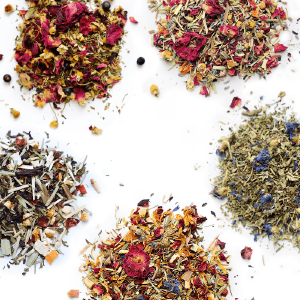Black Huckleberry (Gaylussacia baccata)
Black Huckleberry (Gaylussacia baccata), also known as common huckleberry, is a native deciduous shrub known for its small, dark berries and vibrant autumn foliage. Thriving in acidic soils and woodland settings, this slow-growing shrub is an excellent choice for naturalized landscapes, wildlife gardens, and understory plantings.
Distinctive Features
Black Huckleberry produces glossy green foliage that turns shades of red and purple in fall. Its small, bell-shaped pinkish flowers bloom in late spring, giving way to edible black berries that attract birds and wildlife.
Growing Conditions
- Sun Exposure: Prefers partial shade but tolerates full sun.
- Soil: Requires acidic, well-drained, sandy, or peaty soil.
- Water: Prefers consistent moisture but is drought-tolerant once established.
- USDA Hardiness Zones: 3-7, well-suited for temperate climates.
Ideal Uses
- Wildlife Gardens: Provides food for birds and pollinators.
- Woodland Gardens: Thrives in shaded, understory plantings.
- Naturalized Areas: Spreads gradually to form dense colonies.
- Edible Landscaping: Berries can be used in jams and baking.
- Low-Maintenance Borders: Offers seasonal interest with flowers, fruit, and foliage.
Low Maintenance Care
Black Huckleberry is a hardy, slow-growing shrub requiring minimal care.
- Watering: Keep soil consistently moist but avoid waterlogging.
- Pruning: Minimal pruning needed; remove dead branches as necessary.
- Fertilizing: Benefits from organic mulch or compost in spring.
- Deer and Rabbit Resistance: Foliage is generally unpalatable to browsing animals.
Why Choose Black Huckleberry?
This native shrub provides year-round interest, wildlife benefits, and adaptability to acidic soils.
- Edible Berries: Rich in antioxidants and attractive to wildlife.
- Vibrant Fall Color: Red and purple foliage enhances autumn landscapes.
- Low Maintenance: Thrives in acidic, well-drained soils with little care.
- Pollinator-Friendly: Supports native bees and butterflies.
For a versatile, native shrub with ecological benefits and seasonal interest, Black Huckleberry (Gaylussacia baccata) is an excellent choice.
Black Huckleberry is easy to care for. Water it regularly to keep the soil moist but not waterlogged. Prune it minimally, just remove dead branches as needed. In spring, add some organic mulch or compost. It’s resistant to deer and rabbits. For growing, it prefers partial shade but can handle full sun. Use acidic, well-drained soil like sandy or peaty soil. Keep it moist but it can tolerate drought once established. It’s suitable for USDA Hardiness Zones 3 – 7. Ideal for wildlife gardens as it provides food for birds and pollinators, in woodland gardens for understory plantings, for naturalized areas to form colonies, for edible landscaping using the berries in jams and baking, and for low-maintenance borders adding seasonal charm.
Be the first to review “Black Huckleberry For Sale Cheap Pice” Cancel reply
Related products
Beverages








Reviews
There are no reviews yet.